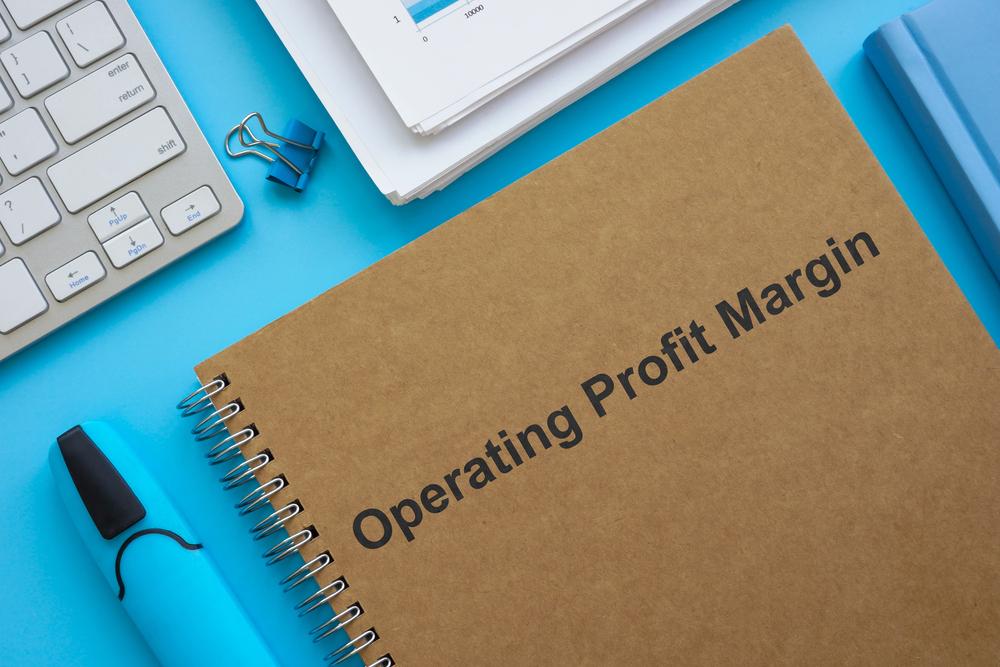Understanding Profit Margins: A Guide for South Jersey Retail and Restaurant Owners
As a South Jersey business owner in the retail or restaurant industry, understanding your profit margins is crucial for long-term success. At TMD Accounting, we’ve helped countless local businesses navigate the unique challenges of our region’s competitive market. Let’s dive into the world of profit margins and explore why they’re so important for your business.
Introduction: The Importance of Profit Margins in South Jersey’s Competitive Market
Definition of profit margins
Profit margin is the percentage of revenue that remains after all expenses have been deducted. It’s a key indicator of your business’s financial health and efficiency. For South Jersey businesses, maintaining healthy profit margins can be the difference between thriving and merely surviving in our dynamic market.

Why profit margins matter for South Jersey businesses
Why profit margins matter for South Jersey businesses
Understanding your profit margins is crucial for several reasons:
- Financial sustainability: Healthy profit margins ensure your business can weather economic fluctuations and seasonal changes.
- Growth potential: Higher margins provide more resources for expansion and improvement.
- Competitive advantage: Knowing your margins helps you price products or services strategically.
- Decision-making: Accurate margin data informs critical business decisions, from menu changes to inventory management.
Overview of unique challenges faced by local retail and restaurant owners
South Jersey businesses face distinct challenges that can impact profit margins:
- Seasonal fluctuations: The influx of summer tourists creates a boom-and-bust cycle for many businesses.
- High competition: The dense population and proximity to major cities mean fierce competition for customers.
- Rising costs: Increasing labor and real estate costs can squeeze margins if not managed properly.
- Changing consumer preferences: Keeping up with evolving tastes while maintaining profitability can be challenging.
Types of Profit Margins Relevant to South Jersey Businesses
Understanding different types of profit margins can help you gain a more comprehensive view of your business’s financial performance.
Gross profit margin
Gross profit margin is the percentage of revenue remaining after accounting for the cost of goods sold (COGS). For restaurants, this includes food and beverage costs; for retailers, it’s the cost of inventory.
Formula: (Revenue – COGS) / Revenue x 100
Example: If your South Jersey pizzeria generates $10,000 in weekly sales and spends $3,000 on ingredients, your gross profit margin would be 70% ((10,000 – 3,000) / 10,000 x 100).
Operating profit margin
Operating profit margin takes into account all operating expenses, including rent, utilities, labor, and marketing costs. It provides a clearer picture of your day-to-day operational efficiency.
Formula: (Revenue – COGS – Operating Expenses) / Revenue x 100
Example: If your retail shop in Ocean City has $50,000 monthly revenue, $30,000 COGS, and $15,000 in operating expenses, your operating profit margin would be 10% ((50,000 – 30,000 – 15,000) / 50,000 x 100).
Net profit margin
Net profit margin is the percentage of revenue that becomes profit after all expenses, including taxes and interest, have been deducted. It’s the bottom line that shows how much of each dollar in revenue translates to profit.
Formula: (Revenue – All Expenses) / Revenue x 100
Example: If your Atlantic City restaurant has annual revenue of $1,000,000 and total expenses (including taxes) of $950,000, your net profit margin would be 5% ((1,000,000 – 950,000) / 1,000,000 x 100).
Industry-specific margins for retail and restaurants
It’s important to benchmark your margins against industry standards:
- Restaurants: Average net profit margins range from 3-5%, with fine dining establishments often achieving higher margins.
- Retail: Net profit margins vary widely but typically fall between 2-8%, depending on the specific sector.
Remember, these are averages, and your business’s unique positioning and efficiency can lead to higher margins.

Calculating Profit Margins: A Step-by-Step Guide
Calculating Profit Margins: A Step-by-Step Guide
Basic formula for profit margin calculation
While we’ve covered specific formulas for each type of margin, the basic principle remains:Profit Margin = (Revenue – Expenses) / Revenue x 100
Identifying all costs (fixed and variable)
To accurately calculate your margins, you need to identify and track all costs:
Fixed costs:
- Rent
- Insurance
- Equipment leases
- Salaries for salaried employees
Variable costs:
- Inventory or ingredients
- Hourly wages
- Utilities
- Credit card processing fees
Accounting for seasonal fluctuations in South Jersey
South Jersey’s seasonal nature adds complexity to profit margin calculations. Here’s how to account for it:
- Track monthly data: Keep detailed records of revenue and expenses for each month.
- Calculate seasonal averages: Determine your average margins for peak season (typically summer) and off-season.
- Use weighted averages: When calculating annual margins, give more weight to peak season months to reflect their higher impact on overall profitability.
- Plan for fluctuations: Use your seasonal data to budget and plan for leaner months.
Understanding and optimizing your profit margins is crucial for the success of your South Jersey retail or restaurant business. By mastering these concepts and calculations, you’ll be better equipped to make informed decisions, improve efficiency, and increase profitability.
Benchmarking Profit Margins in South Jersey
Understanding how your business’s profit margins compare to industry standards is crucial for assessing performance and identifying areas for improvement. Let’s explore the typical profit margins for retail and restaurant businesses in South Jersey.
Average profit margins for retail businesses in the region:
While specific data for South Jersey retail businesses isn’t available in the search results, we can use national averages as a benchmark. Typically, retail businesses have net profit margins ranging from 2% to 8%, depending on the specific sector. However, local economic factors may influence these figures in South Jersey.
Typical profit margins for South Jersey restaurants:
Restaurant profit margins tend to be slim, often ranging from 3% to 5% nationally. In South Jersey, where seasonal tourism plays a significant role, these margins may fluctuate throughout the year. During peak tourist seasons, restaurants might see higher margins, while off-season periods could bring lower profitability.
Comparing your margins to local and national standards:
To benchmark your business:
- Calculate your gross and net profit margins
- Compare them to industry averages
- Consider local factors that might influence these figures
- Regularly review and adjust your strategies to improve your margins
Factors Affecting Profit Margins in South Jersey
Local economic conditions and tourism patterns:
South Jersey’s economy is significantly influenced by tourism, particularly in shore areas. The influx of visitors during summer months can boost revenues, but businesses must manage costs effectively to maintain healthy profit margins during slower periods.
Seasonal business fluctuations (e.g., summer shore traffic):
Many South Jersey businesses experience dramatic shifts in customer volume between peak summer months and the off-season. This requires careful financial planning and resource management to maintain profitability year-round.Labor costs and minimum wage considerations:
New Jersey’s minimum wage is set to increase annually until it reaches $15 per hour in 2024. This gradual increase impacts labor costs, a significant expense for retail and restaurant businesses. Owners must strategize to maintain profit margins while complying with wage laws.
Local supplier relationships and costs:
Building strong relationships with local suppliers can help businesses negotiate better prices and terms, potentially improving profit margins. However, the cost of goods in New Jersey may be higher than in some other regions, which can impact overall profitability.
Strategies to Improve Profit Margins for Retail Businesses
Optimizing inventory management for South Jersey’s seasonal market:
- Use data analytics to predict seasonal demand
- Implement just-in-time inventory practices during peak seasons
- Develop strategies to minimize excess inventory during off-seasons
Pricing strategies for tourist-heavy areas:
- Consider dynamic pricing models during peak tourist seasons
- Offer value-added packages or experiences to justify higher prices
- Implement loyalty programs to encourage repeat business from locals
Leveraging local partnerships and cross-promotions:
- Collaborate with complementary businesses for bundle deals
- Participate in local events and festivals to increase visibility
- Partner with hotels and tourist attractions for mutual promotions
Implementing effective cost control measures:
- Regularly review and negotiate supplier contracts
- Optimize staffing levels based on historical data and predictive analytics
- Invest in energy-efficient equipment to reduce utility costs
Enhancing Profit Margins for South Jersey Restaurants
Menu engineering for maximum profitability:
- Analyze the profitability and popularity of each menu item
- Strategically place high-margin items in prominent menu positions
- Regularly update menus to reflect seasonal availability and customer preferences
Managing food costs with local and seasonal ingredients:
- Build relationships with local farmers and suppliers
- Adjust menus seasonally to take advantage of lower-cost, in-season ingredients
- Implement portion control measures to reduce waste
Optimizing staffing for fluctuating customer volumes:
- Use historical data to predict staffing needs
- Cross-train employees to handle multiple roles during slower periods
- Consider flexible scheduling options to adapt to changing demand
Leveraging technology for efficiency:
- Implement a robust POS system for accurate sales and inventory tracking
- Use kitchen management software to optimize food preparation and reduce waste
- Adopt online ordering and reservation systems to streamline operations
The Impact of Taxes on Profit Margins in New Jersey
Understanding New Jersey’s tax landscape for small businesses:
New Jersey has a complex tax system that includes:
- Corporate Business Tax
- Sales and Use Tax
- Gross Income Tax for pass-through entities
- Various industry-specific taxes
Strategies for tax-efficient operations:
- Maintain accurate and detailed financial records
- Take advantage of allowable deductions and credits
- Consider the tax implications of your business structure
- Plan major purchases and investments with tax consequences in mind
Leveraging local tax incentives and credits:
- Explore the New Jersey Economic Development Authority’s programs for small businesses
- Investigate tax credits for hiring local employees or investing in certain areas
- Consider energy efficiency upgrades that may qualify for tax incentives
Cash Flow Management and Its Relation to Profit Margins
The importance of cash flow in maintaining healthy profit margins cannot be overstated, especially for South Jersey businesses facing seasonal fluctuations. A robust cash flow ensures you can cover operational costs, invest in growth opportunities, and weather lean periods without compromising your profit margins.Strategies for managing cash flow in seasonal businesses:
- Build cash reserves during peak seasons to cover off-season expenses
- Negotiate flexible payment terms with suppliers
- Offer early payment discounts to encourage prompt customer payments
- Consider invoice factoring or lines of credit for short-term cash needs
- Implement a cash flow forecasting system to anticipate and prepare for fluctuations
Tools and techniques for cash flow forecasting:
- Use spreadsheet templates or specialized software for cash flow projections
- Analyze historical data to identify seasonal patterns
- Regularly update forecasts based on current market conditions
- Conduct scenario planning to prepare for various financial outcomes
Technology and Profit Margin Management
Software solutions for tracking and analyzing profit margins:
- QuickBooks for small businesses
- Xero for cloud-based accounting
- Sage 50cloud for more complex financial management
- Industry-specific solutions like Restaurant365 for food service businesses
Integrating POS systems with accounting software:
- Choose POS systems that offer direct integration with your accounting software
- Ensure real-time data synchronization for accurate financial reporting
- Use integrated systems to track inventory, sales, and labor costs simultaneously
Using data analytics to identify profit improvement opportunities:
- Analyze product mix to focus on high-margin items
- Identify underperforming products or services for potential elimination
- Use customer segmentation to target marketing efforts more effectively
- Monitor employee productivity metrics to optimize staffing
Common Pitfalls in Profit Margin Management for South Jersey Businesses
-
Overlooking hidden costs:
-
- Failing to account for all overhead expenses
- Underestimating maintenance and repair costs for equipment
- Neglecting to factor in seasonal utility cost fluctuations
-
Mispricing products or services:
-
- Not regularly reviewing and adjusting prices based on market conditions
- Failing to consider all costs when setting prices
- Undervaluing unique or specialty offerings
-
Failing to adapt to seasonal changes:
-
- Not adjusting inventory levels for off-season periods
- Maintaining full staffing during slow periods
- Neglecting to create off-season revenue streams
-
Neglecting to regularly review and adjust strategies:
-
- Failing to conduct regular financial reviews
- Not staying informed about industry trends and local market changes
- Resisting technological advancements that could improve efficiency
Future Trends Affecting Profit Margins in South Jersey
-
Emerging technologies and their impact on operations:
-
- Increased adoption of automation and AI in retail and restaurants
- Growth of contactless payment systems and mobile ordering
- Use of data analytics for personalized customer experiences
-
Changing consumer behaviors and preferences:
-
- Shift towards experiential retail and dining
- Growing demand for locally sourced and sustainable products
- Increased expectation for omnichannel shopping experiences
-
Potential regulatory changes and their effects on profitability:
-
- Possible minimum wage increases
- Changes in labor laws affecting overtime and scheduling
- Evolving health and safety regulations in the post-pandemic era
The Role of Professional Accounting in Maximizing Profit Margins
Benefits of partnering with a local accounting firm:
- In-depth knowledge of South Jersey’s business landscape
- Personalized attention and tailored strategies
- Proactive approach to financial management and tax planning
How TMD Accounting can help optimize your profit margins:
- Conduct comprehensive financial analysis to identify improvement areas
- Provide expert guidance on tax strategies and cash flow management
- Offer industry-specific benchmarking and best practices
Customized strategies for South Jersey retail and restaurant owners:
- Seasonal profitability planning
- Inventory optimization techniques
- Labor cost management solutions
Conclusion: Actionable Steps for Improving Your Profit MarginsRecap of key strategies:
- Implement robust cash flow management practices
- Leverage technology for financial tracking and analysis
- Regularly review and adjust pricing and operational strategies
- Stay informed about industry trends and local market changes
Importance of ongoing monitoring and adjustment:
Continuous evaluation and adaptation are crucial for maintaining healthy profit margins in South Jersey’s dynamic business environment.
Contact TMD Accounting for personalized assistance:
For expert guidance tailored to your South Jersey business, contact TMD Accounting at 1-856-228-2205. Our team of experienced professionals is ready to help you optimize your profit margins and achieve long-term financial success.
Bonus: FREE Download
📥 Download Our Free Guide:
-
- “7 Accounting Metrics Every Restaurant Owner Must Track”—and start improving your bottom line today!
- 5 Ways to Cut Costs and Increase Profit Margins for Your Restaurant

